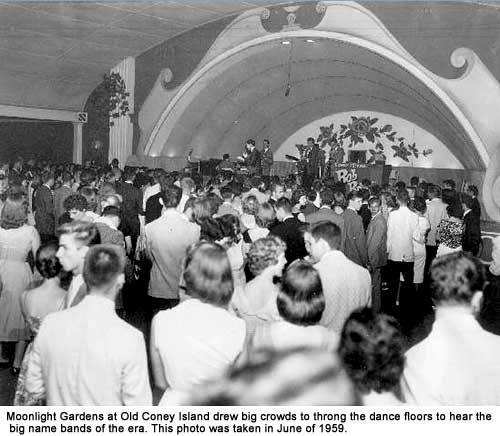 Post #61 – Women’s Memoir Writing, ScrapMoir – Matilda Butler and Kendra Bonnett
Post #61 – Women’s Memoir Writing, ScrapMoir – Matilda Butler and Kendra Bonnett
by Bettyann Schmidt
“Those who danced were thought to be quite insane by those who could not hear the music.” ~ Angela Monet
A New Take on Memoirs and Music
Using music to retrieve my buried stories is one of the biggest aids I’ve found. I guess it depends on how much music and song have affected your life. For me, it was a natural. From my life’s earliest moments I was exposed to music and popular songs. When I recalled the music, I found my stories.
The Old Radio
Here’s a good memory jogger. I stumbled onto this online “What’s the first song you remember listening to on the radio and how old were you?”
A lot of old favorite rock tunes came to mind, but I wasn’t sure which one was first. Then I read someone else’s answer: Perry Como in 1957, “Catch a Falling Star,” which the responder said he heard on an old wooden radio as tall as he was at the time.
I remembered the old radio at my Grandpa’s house in the country, and then I remember hearing “Dance Ballerina Dance” by Nat King Cole. And the radio was also about the same height as I was. I must have been four or five at the time. I remember twirling around Grandpa’s living room like a ballerina every time I heard that song.
“When the music changes, so does the dance.” African Proverb
That jog triggered my brain cells, and the next song I recalled was one introduced by my two jitterbugging aunts: Glen Miller’s “In the Mood.” I know there are some of you readers who have memories of this song too.
As soon as I was able to walk and talk, and understand what was going on around me, I got to witness those two girls, made up like movie stars, spinning and jiving to big band brass and drums. I was surprised later in my teen years that “In the Mood” was still around, probably because it was about the best dance-contest tune ever written. The jitterbug lived on. It became “swing” in my nightclubbing years, reverting to its original name during the big band era.

Inwood Park, where my aunts went to dance. I remember sitting on the grass one time watching them. They were good dancers, and a lot of fellas wanted to be their partners.
Doo-Wap and Awop-Bop-A-Loo-Mop
“Music is a bridge between cultures.” ~ Theo Staub, Aviation Industry COO and Author
Around 1954, when I was twelve and people still wore their “I Like Ike” buttons, some different music started airing on the plastic portable radio we kept on our windowsill. It got the attention of kids all over the nation. The first one I remember was “Sha-Boom” by a young group called The Chords.
That’s when we began dancing.
Mainline pop, what our parents liked, was also acceptable to us, however.. We liked “That’s Amore,” and young girls and women alike fell in love with heartthrob Dean Martin. A shared romance with daughters and their moms.
Life was sunny and blue, except for the newspaper headlines shouting that the Russians were going to send us an atomic bom. I was old enough to be scared. Everyone was talking about bomb shelters, and air-raid sirens were being tested. I thought I would die before I reached my teens.
But kids kept dancing. And the pace got faster.
A guy with a strand of hair hanging on his forehead recorded a fast tune called “Rock Around the Clock,” Chuck Berry sang “Mabellene,” a southern boy from Tennessee jumped around, twitching his legs, crooning “Heart Break Hotel,” and parents worried.
“Rock and Roll” headlines now shared the front page with President Eisenhower’s plans to build a highway system that would let us “See the USA in Our Chevrolet” as sung by Cincinnati’s own, Doris Day.
Doris also sang “Que Sera Sera,” which I heard on a transistor radio on Aunt Dot’s porch, playing jacks with cousin Mary Lou. A little later, “Blueberry Hill” by Fats played on the same station.
Things were running smoothly, when a little black singer screamed across the air waves “awop-bop-a-loo-mop-alop-bam-boom.” It was 1957, the year of Sputnik, Hoola-Hoops, and anti-segregation in Arkansas, which I didn’t grasp at that age. The South was another world to me, and the fact that “colored” people didn’t have the same rights as I did shocked me.
All in the Game
Also in 1957, I got my first real boyfriend and my first broken heat. We moved to another section of the city, and my new friend Jackie took me to a party, a different type party than my Catholic school friends had. Everyone smoked cigarettes, and I learned how too. No one told us that we would have to break an addiction later in life that would prove to be one of the hardest things we had to do, and some of us might die from lung cancer. We were just having “fun.” Several of the boys passed beer bottles around. I wondered what I would say in confession the next Saturday.
Sam Cooke’s velvety voice filled the basement party room with “You Send Me,” and a stout, tall boy with black hair greased back in duck-tails led me to the center of the concrete floor to dance. He held me way too closely, but I didn’t care. We danced to that same song over and over.
“I remember the music that was playing…And I remember the feeling in the magic of the moment, The rhythm of that song. I remember the music” ~ Rick Monroe, Country Music Artist
The boys had their own hot-rod club, the “Dragon Wagons.” We “broads” were the “Dragonettes.” I loved my life. It was blue jeans, shirts with upturned collars, drag races, cherry Cokes at the drugstore soda fountain, and music.
Then I made a stupid mistake and invited my red-haired friend Judy to the next party. Lonnie was hooked and I was history. My first broken heart. I stayed friends with Judy, however, and after high school we got an apartment together for a while.
That summer, I met Bobby at Inwood Park’s ball park. He was totally opposite Lonnie. Tall, tan, short hair, having just graduated Roger Bacon Catholic High School. Why he ever asked me for a date I’ll never know because he was like a star in my neighborhood. Later, I always thought he felt sorry for me, or he wanted to do something “nice” for the little skinny girl.
He picked me up in a white Chevy Impala convertible, and we danced at Coney Island’s Moonlight Gardens. He kissed me goodnight on my porch, and I could hardly keep standing on my weak legs. I watched him drive off and out of my life.
The next week he went off to the Army. I never let Mom or Dad know how hurt I was, but I think they knew. No letters came from the army to me. He said he would write to me. I grieved to Tommy Edwards’ “All in the Game” on my radio and sobbed because I realized it was just a big game. Why didn’t someone explain it earlier? Why didn’t they teach this in school?
Dance to the Music

I finally found solace in entering and winning dance contests. I watched bandstand from Philly every afternoon. I became friends with the best dancers and went to all the hops. Moonlight Gardens had one on Saturdays that was televised. When the fast dance contest song turned out to be “In The Mood,” I got over my heartbreak and just danced. I knew that number.
About this time, the school nuns became fearful for our souls because of our music. The said that Paul Anka’s “You Are My Destiny” was sinful because God should be our destiny. They gave us a class on “French kissing.” It could get you pregnant. A few of us already knew that wasn’t true.
Then the radio stations were not allowed to play “Party Doll” by Buddy Knox because it was banned for being sexual. The lyrics, “I’ll make love to you,” were to blame. After they banned it, I wanted to know what was wrong with those lyrics. I didn’t know what “make love” meant. I thought it was kissing like the nuns told us about. Now, “juking,” I knew what that meant.
Spike Heels and Big Hair
After dancing my way through high school, switching to public school for the last two years and Pomp and Circumstance the last tune of my fourth year, I did what Dad told me to do and got a job. I worked as a clerk steno for Brunswick Sporting Goods. I think my salary was somewhere between fifty-five to sixty dollars a week. I used some of that to enroll in Xavier University night classes studying English Composition in spite of my family thinking I was nuts.
The rest of my salary was spent on clothes and the hair salon. Friday nights found me in the big Cincinnati and Kentucky nightclubs dancing in spiffy high heels and tight dresses with my hair done up in a hard, hair-sprayed upsweep. I was still doing the “swing,” but the bands on stage were different. Rhythm and blues, heavy on the blues.
Elvis and most other white musicians weren’t played in the clubs. Otis Redding’s was, along with Sam Cooke, Ray Charles, Bobby “Blue” Bland. It was the time of guitar and “horns,” B.B. King style, with the big band sound, and the local band that were good had at least a man on sax and sometimes trumpet.
When the front man sang “Stormy Monday,” a T-Bone Walker blues, I began to feel that music. I learned why this became known as “soul” music. You had to feel it.
Somehow, in the mix, I ended up marrying the sax player.
Two songs of that era have remained my favorites of all time. B. B.’s “Stand by Me” and the other, “My Girl,” by the Temptations.
When my youngest son Jeff was in the hospital for brain surgery, anxious and scared, I changed the words a little and repeatedly sang “My Boy” to him. That remains his special song at special times.
“I’ve got sunshine on a cloudy day, and when it’s cold outside I’ve got the month of May.”
And when I sing it to him, I go back in time. I remember the music.
Coming of Age Music
The sixties and seventies are behind me at last, the craziness, traveling with a band, the hippie era. I still remember the music though. In 1987 I married my present husband, an old hippie and war protestor who met up with me. And we remembered the music together.
The number 10 spot on the music scene the year we got married was “The Time Of My Life,” sang by Bill Medley and Jennifer Warnes, part of the soundtrack for the movie “Dirty Dancing.” I thought it was a good theme song for my own track.
I’ve indeed had the time of my life. Even during the hard times there was music.
I encourage you to try remembering music for your own story. I’ve been surprised by how many forgotten memories come to life merely by recalling a song from my past. Let me know, by leaving a comment below, some of the important songs in your life. Maybe some of them are from my life too.
Check back in two weeks for Part 2 of my Life Soundtrack series, “Voices of the Past,”
Bettyann Schmidt
Be sure to join me on my blog:
Journey2f.blogspot.com
memoir writing
memoir
writing
scrapbooking

















